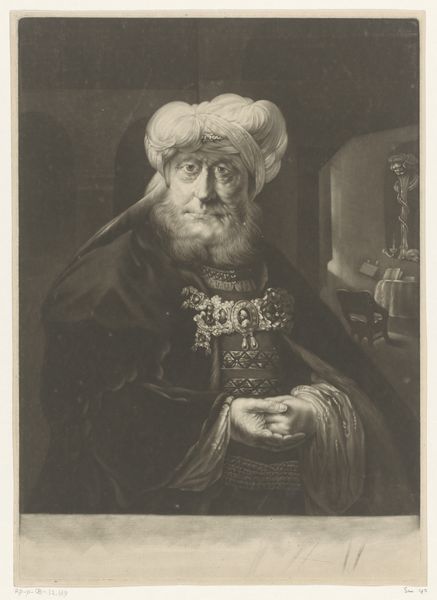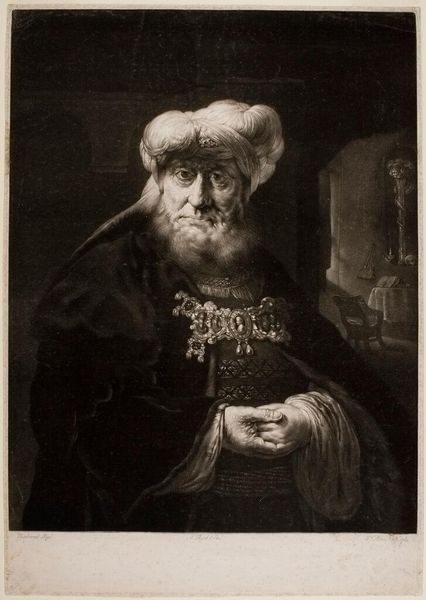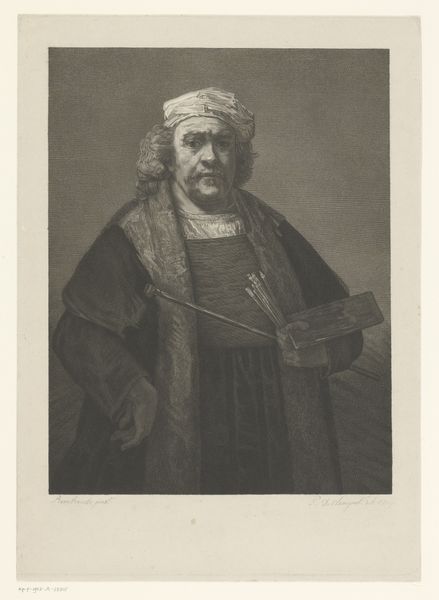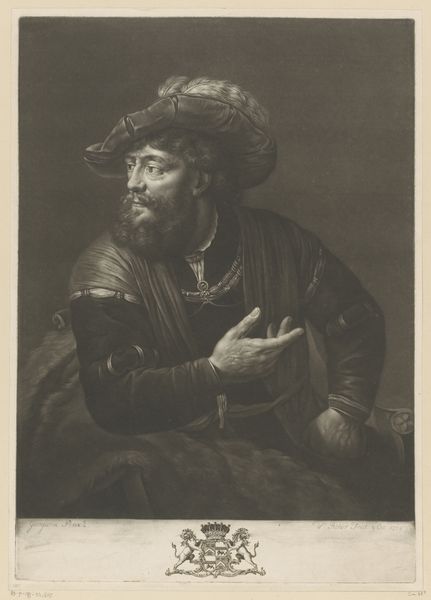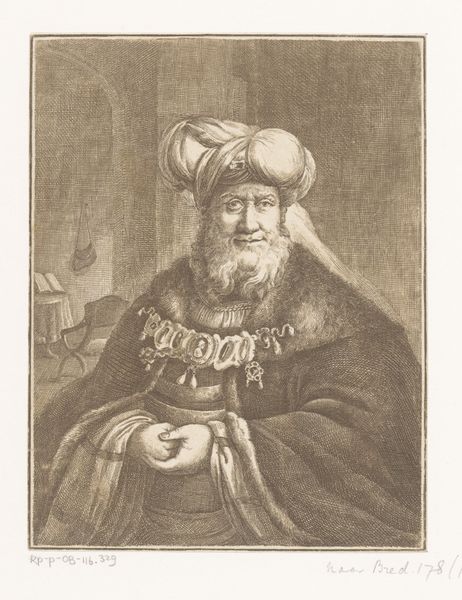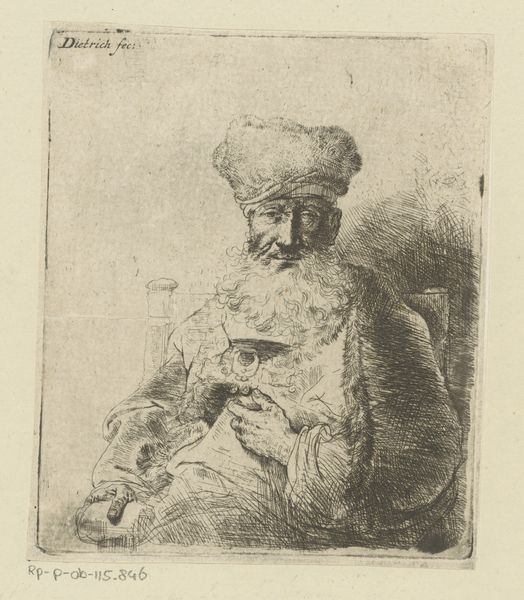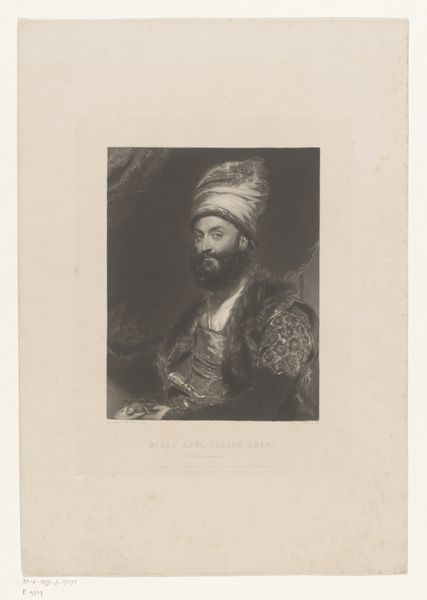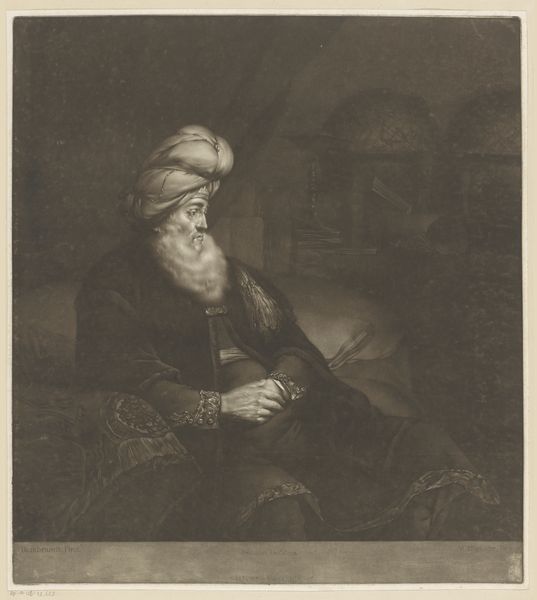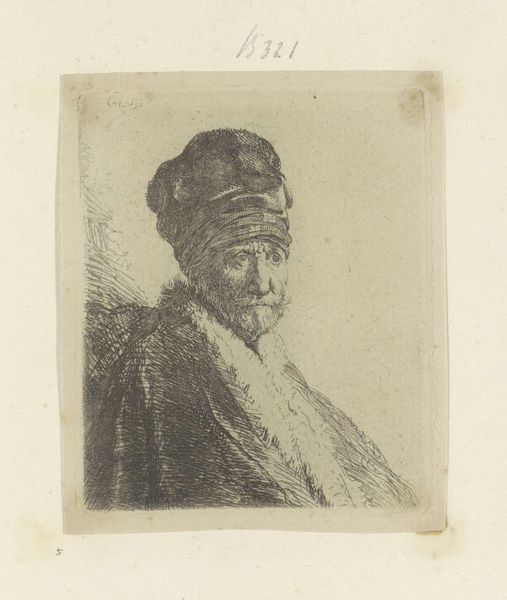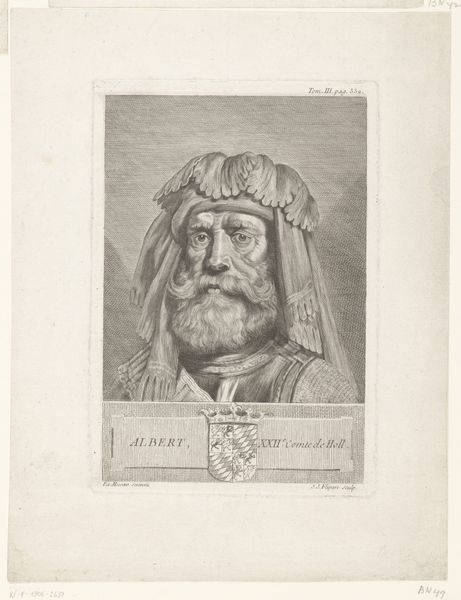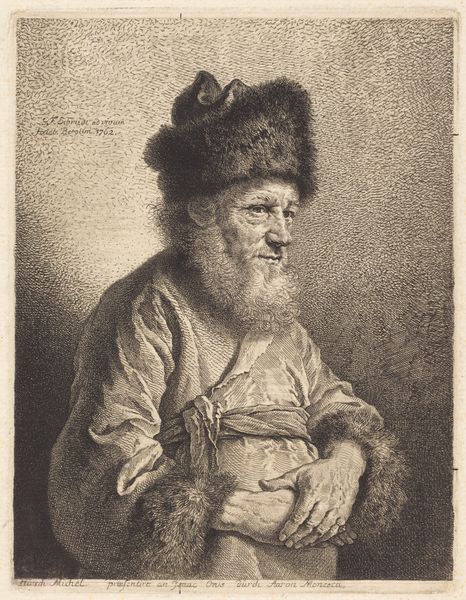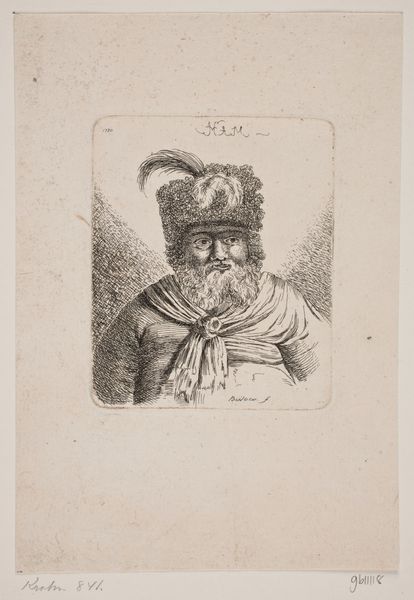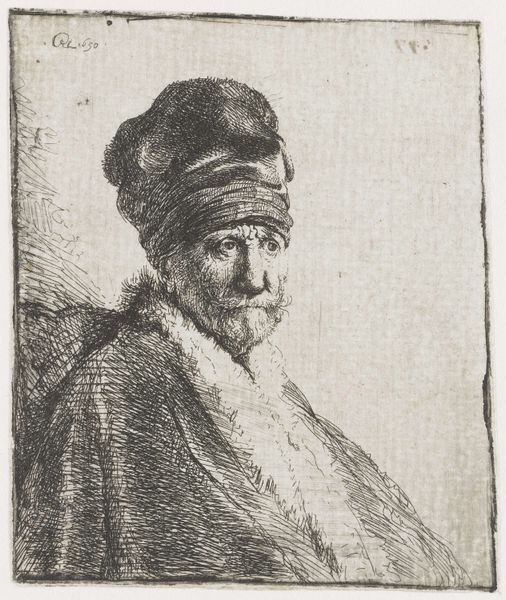
print, engraving
#
portrait
# print
#
history-painting
#
engraving
Dimensions: height 512 mm, width 354 mm
Copyright: Rijks Museum: Open Domain
Curator: Welcome. We're standing before "Koning Uzziah geteisterd door melaatsheid," or "King Uzziah Afflicted with Leprosy." William Pether created this engraving in 1764. What's your initial take on it? Editor: It's incredibly somber, isn't it? The texture, though, feels almost like crushed velvet because of the engraving. Like something weighty and Old Testament about to happen, but softened at the edges by time, maybe? Curator: Indeed. The stark contrasts typical of the engraving technique serve to heighten the dramatic tension. Pether skillfully manipulates light and shadow to direct the viewer's gaze precisely where he wants it: to the king’s face and hands, drawing out an unsettling contrast between his regalia and his disease. Editor: I feel the weight of tradition—all that gold thread on the robes, the bejeweled turban, heavy, heavy stuff. Makes me wonder if his crown feels like a punishment now, not a privilege. Like the opposite of cool, man. Curator: Consider the formal elements. The composition hinges on the king's pose, which can be deconstructed through a system of contrasting geometric forms that intersect. The folds in the robes form complex triangles mirroring a crown. His hand, a focus point of visual tension, signifies both power and vulnerability in that single visual node. Editor: Okay, the vulnerability is off the charts. Those hands clasped, pleading. Almost feels like the image whispers about repentance, like he's seeing himself through someone else's eyes all of a sudden. Did Pether have a moral agenda with this engraving, perhaps about rulers gone astray? Curator: Pether was working within a tradition of history painting and portraiture which inevitably carries some embedded morality, though less overt than it first appears. As an engraver, his primary concern lay with technically translating existing artworks from paint to a readily reproducible printed medium for the masses. So, there's certainly interpretation, but, ultimately, it is derivative. Editor: Derivative or not, it resonates. Even in monochrome, Pether captured an intense portrait, maybe it’s about realizing you're just human under all the bling? What a wake up call, literally carved in time, that anyone with power can mess up. Curator: That interplay of the powerful and the fragile indeed anchors much of its emotional power. Let's now move on to our next piece. Editor: Okay, on to the next encounter! Hoping it involves fewer divine punishments this time!
Comments
No comments
Be the first to comment and join the conversation on the ultimate creative platform.
